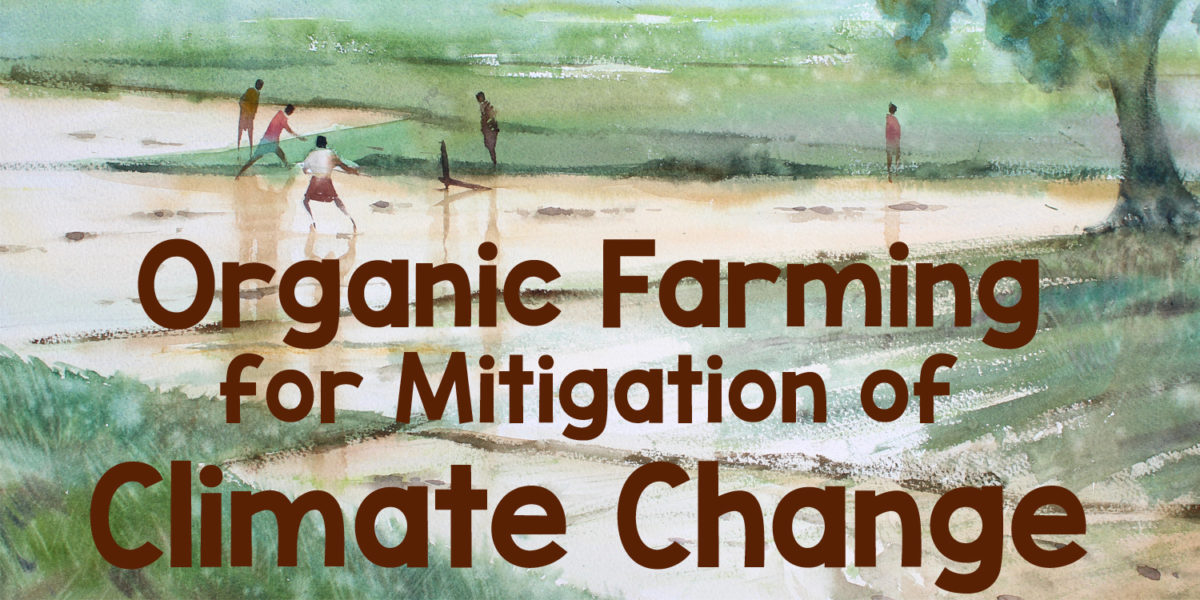Thanks to Greta Thunberg, people around the world have been woken up to climate change crisis. Some critics have already termed it as just a passing fad and some have also harshly criticized the demands of climate strike group as lop sided and even French media has warned that her radical ways could end up depressing a generation. Despite the criticism, we can not ignore the passion and effort of a young 16 year old, which for sure has brought about a much needed disruption in the collective slumber of the world.
Along with climate activists there has also been the rise of climate change deniers. In fact the deniers claim that the earth is actually in the middle of a cooling period. Though it is suspected that these groups are backed by fossil fuel companies to spread misinformation based on fringe science, the climate change data is also not without it share of suspicion. There are claims cthat the Global Warming data has actually been faked by NASA to aid politically vested interests. Such contradictory reports can be very confusing and its very difficult to really understand the truth. But we can always look around and see how things have changed around us. We need also to understand both Global Warming/Cooling and Climate Change independently even though they are linked.
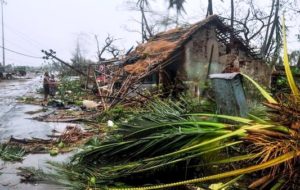
Climate Change can be defined as unexpected and unpredictable change in weather pattern. It can be either in the direction of cooling or warming. Agriculture, economy, cultures and societies are dependent very heavily on predictability of climatic conditions. When weather pattern is disrupted on a continuous basis it leads to break down of societies and civilization irrespective of whether we are cooling or warming. From the data of past few years it can be seen that there has been unexpected changes in climatic conditions and weather stability has been an issue. Closer home monsoons have become irregular. The agricultural system of India is largely dependent on the predictability of monsoons. But with errant maze of downpours and droughts the agrarian crisis has gone from bad to worse in the last decade. Sea level rise has inundated villages in the coastline and at few places entire village has been abandoned. There has been unprecedented rise in temperature even in what are supposed to be cooler months. Cyclonic storms have become very common and stronger. Ground and surface water availability has become a big issue. Our oceans are becoming poisonous and ecosystems around us are failing. All these facts tell us that there is a definite change in weather cycle and also rise in over all temperature. Greenhouse gasses and deforestation have been found to be a major cause of these changes. It really does not matter what different groups are saying about the temperature of the earth; climate is surely changing and we need to be concerned about it.
Agriculture and Climate Change
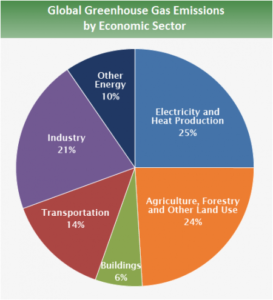
The demands of the climate strike group focus on reducing emission in transport and electricity production sectors and rightly so. But there is little focus on another significant contributor to global greenhouse gasses which is the Agriculture sector. According to IPCC data in 2014 Agriculture is a close second to Electricity and heat production sector in effecting climate change (Some latest statistics also suggest that GHG emission from agricultural sector is now at 29% as opposed to 24% according to 2010 data) . To some it may come as a shock; after all we are growing plants in farming and how can that contribute to climate change! It sounds so counter intuitive. But the fact is that modern industrial agriculture is one of the biggest culprits of increasing global green house gasses. And this is how it happens.
- According to a 50 year long study by university of Illinois carbon loss from soil is accelerated when synthetic nitrogen fertilizer is used. Average carbon loss in fields where synthetic nitrogen fertilizer is applied is 10,000 kg per hectare which is 36,700 kg of CO2 per hectare.
- Intensive industrial agriculture practices such as tilling, mono cropping and removing crop residue expose the carbon soil to oxygen which combines with the carbon to become atmospheric carbon dioxide. In fact it is estimated that some 25-40% of the excess carbon in air is due to destruction of soil organic matter.
- Intensive agriculture practices are used for growing animal feed and cash crops. About 90% of the soy and 50% of the grain of the world is actually used as animal feed to grow meat and dairy. In addition industrial animal husbandry by itself it a huge contributor of green house gasses especially methane.
- Forests are being destroyed for agriculture. About half of forest land in the world has been converted into croplands and pastures. The cooling effect caused by moisture transpired from plants and trees is hence gone. This causes compounded warming along with the greenhouse effect.
- Heavy usage of fossil fuels in industrial farming causes further GHG emission.
- Last but not the least, the carbon footprint of making and transporting chemical fertilizers and pesticides also contributes to the over all role of organic farming for mitigating climate change.
Soil Carbon and the Carbon Cycle
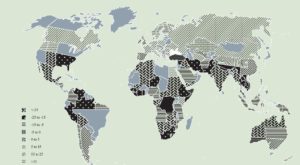
The graphics here released by United Nations show the predicted agricultural productivity loss due to climate change. But we now know that modern agriculture is not just an innocent victim of climate change, but is a major contributor to it too. But unlike other sectors Agriculture also has the ability to become a solution to mitigate climate change. According to FAO (Food and Agriculture organization of the UN) – “Agriculture not only suffers from the effect of climate change, it is also responsible for 14% of greenhouse gas emission. But agriculture has the potential to be an important part of the solution through mitigation – reducing and/or removing a large part of global emissions.” To understand this we need to understand how carbon is stored in the soil by nature.
Plants pull out carbon dioxide from atmosphere and then convert the carbon to stems leaves etc. They do give some of the carbon dioxide back to the atmosphere through respiration, but it is smaller comparable to what they absorb from the atmosphere. When plants die they decompose and turn into soil carbon. Some amount of carbon dioxide is also released during the decomposition process and microbes break down plant matter into their food. When this decomposed plant matter stabilizes as humus (well decomposed organic matter) it stays in the soil for hundreds of years. I guess now we are beginning to see how soil can become a good sink for atmospheric carbon.
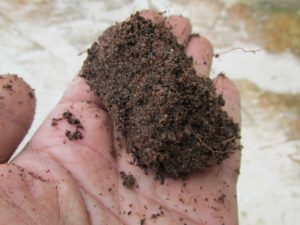
Currently soil stores more than three times the amount of carbon in atmosphere. But there has been a significant loss in soil carbon in post industrial era. Soil have lost 50-70% of their carbon according to studies. But that also tells us that there is a potential of removing atmospheric carbon and returning the lost carbon back to soil and thus help fight climate change. The process of returning carbon to soil is known as carbon sequestration of soil and according to a study in 2017 it was found that global croplands can store up to 1.85 giga tonnes of carbon per year. This process could continue upto 40 years till soil becomes saturated. According to an GRAIN (NFO) soil organic matter could be restored to pre-industrial cultivation era in roughly 50 years offsetting approx 30% of current global GHG emission. It is these numbers of soil carbon sequestration which makes organic agriculture a front line candidate for mitigating climate change.
Organic Agriculture for Mitigation of Climate Change
Organic agriculture most of the time is referred to as replacing chemical inputs with natural ones in the current industrial mode of agriculture. But that is a huge mislead. In spirit organic farming is a different practice of agriculture which runs in sync with nature and natural conditions. Though the practices vary slightly with geography as it should, in approach it remains same and is based on the core philosophy of regeneration, nutrient cycling and balance. Some of the features of organic farming are
- Integrated approach (trees, animals and croplands) for better nutrient recycling
- Closed loop agriculture with locally available inputs and resources
- Soil regeneration through composting and ground covers
- Use of locally adapted sturdy varieties and seed saving
- Bio-diverse agriculture
- Efficient nutrient and water management
- Integrated with larger social and cultural systems and managed by local small scale farmers
The following sections examine how Organic Farming practices can be used to offset green house gasses and also combat climate change issues.
Soil Carbon and GHG Management through Organic Agriculture
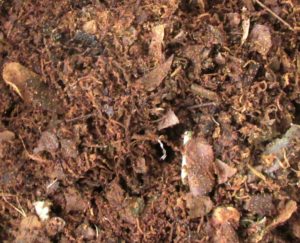
Every year during winters the smoke from crop residue burning creates a smog situation in the national capital of India. Crop residue burning is a common practice in conventional agriculture which not only creates a lot of smoke, it adds significant amount of carbon dioxide to the atmosphere. In fact it is the largest contributor of GHG in agriculture. In contrast in organic farming crop residue is composted as farm yard manure or FYM to be applied to soil and thus returning carbon back to soil. Additionally crop residue is also used as a mulch or ground cover to protect the soil from further carbon loss. Crop residues also serve as a great food for the farm animals in integrated farming.
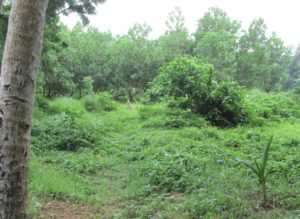
No tilling agriculture is an extreme form of organic farming in which soil is not tilled. Soil organisms are encouraged to act as the natural tillers and with presence of enough organic matter soil structure also becomes good enough so as not to require tilling. Bio-diversity in cropland is one of the main features of organic farming and mono cropping is discouraged. Thus with reduction in tilling and absence of mono cropping soil carbon losses are minimized. Also As synthetic fertilizers and pesticides are not used in organic farming, the soil carbon loss due to nitrogenous fertilizer is arrested.
Infertile lands have low quantities of carbon and hence a lot of carbon can be sequestered in it. But generally they are abandoned leading to further carbon loss. But using organic agriculture techniques of soil carbon sequestration, the soil can be rejuvenated and used as croplands within a span of 2-5 years. This will also bring down the pressure on forest land which is being cleared for farming.
Though unfairly compared with transport sector in terms of GHG emission, commercial live stock farming is one of the major contributors of methane gas in agriculture sector. The effect of methane on climate change is estimated to be about 23-25 times that of Carbon Dioxide. Additionally feed grown for the cattle separately using industrial agriculture practices add their own carbon to the atmosphere. Organic farming follows an integrated approach whereby ruminants are a part of the agricultural system. This combination of animal husbandry and farming at a single place produces the most efficient nutrient cycling and reduces the total GHG emission. The total agricultural land in the world is approximately 1.5 billion hectare while the total number of ruminants are also estimated to be around the 1.5 billion mark which is one cow per hectare of agricultural land. Mathematically at least the numbers look great for GHG emission reduction.
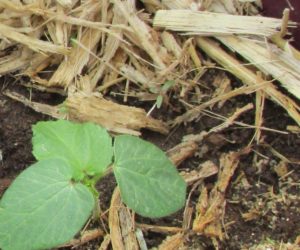
Conventional agriculture practices require forests to be cleared off to make way for agriculture. But organic agriculture integrates forests and trees into the agricultural system. Farm land is seen more as a ‘food forest’ rather than crop field. The shade of the trees and cooling effects due to transpiration provide a more suitable micro climate for agriculture. Additionally their leaves and other parts are used in compost, pest management, animal feed etc. They also help to arrest soil and nutrient erosion caused due to rain and wind.
Thus Organic Farming not only has a low carbon foot print, it also helps in better nutrient cycling, animal management, soil rejuvenation and most importantly it has the capability to offset atmospheric GHG through soil carbon sequestration.
Climate Change Resilience of Organic Agriculture
The advantages of organic farming does not stop at just reducing atmospheric carbon in the context of climate change. The practices of organic farming are also resilient to climate variations. Some of the major ones are,
- Use of locally adapted crops and their varieties makes the crops grown naturally resilient to local pests, diseases and climate variations as their tolerance level of local climate is high.
- As soil biomass content increases the water holding and retention capacity of the soil increases. This makes organic agriculture less prone to drought and flooding. During flooding the soil can absorb excess moisture and during droughts the moisture retained in the soil helps to hydrate the plants.
- Pest and weed management is better done through practices like crop rotation, companion planting, mulching etc.
- In bio diverse farming the total crop loss due to a climatic event is very rare. In case of an extreme weather event some crops are lost while other manage to hang on. Thus bio diverse farming increases the resilience of the agricultural system itself.
- Low dependency on non-local inputs and resources makes sure that production is never disturbed due to any external events. It also lowers the cost of production.
Comparison of Organic Agriculture with AI’s of the UN
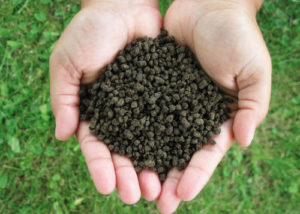
The 2013 annual report of United Nation Commission for Trade and Development (UNCTAD) dramatically titled ‘Wake up before its too late’ had suggested that small scale sustainable agriculture is the only way forward to feed the world in the context of climate change and not GMO or any other such technologies. While sustainable farming is defined by the UN as “Production of more and better quality food with less inputs most of which are locally available based on closed nutrient cycles”, the following action items are given for climate change mitigation through sustainable agriculture.
- Technical (Direct)
- Reduction of Nitrogen inputs
- Agro forestry
- Organic fertilizers instead of synthetic fertilizers
- Soil carbon sequestration through organic matter and compost
- Storage loss minimization
- Integrated system with closed nutrient cycle
- Climate resilient food and varieties
- Technical (Indirect)
- Reduction in use of fossil fuels
- Reduction in transport
- Social
- Reduction of food wastage
- Reduction of meat consumption
In the Technical (direct) AI’s organic agriculture ticks all boxes except point no 5 which is not really related to the agricultural process as such. In the Indirect technical AI’s too organic agriculture meets both the demands. The nature of organic agriculture itself (non industrial nature) does not allow much mechanization and hence use of fossil fuels. As there is very low dependency of external inputs, there is reduction in transport too.
Can Organic Agriculture Feed the World
As per the definition of sustainable agriculture given by UN Organic agriculture produces food with less inputs most of which are local and is based on closed nutrient cycle. The quality of food produced is also better in terms of nutritional value and being safe from pesticides and other chemicals. But the big question is that can it produce more quantity of food! In other words ‘Can Organic Farming Feed the World?’
Inherent in the above question is an assumption, that the current form of industrial agriculture is able to feed the world. And if we switch to organic farming the quantity of food produced will not be enough to meet the demands. But the fact is that under current system of industrial agriculture, where 40% of the world’s food is wasted, about 1 billion people still go un-nourished and poverty stricken. 70% of such people live in rural areas. The main reason for this is not actually lack of production, but lack of access to affordable diet, means of production and resources for small holders (UNCTAD report 2013).
The cost of food production shows an upward graph in conventional agriculture. Soil fertility decreases with repeated chemical fertilizer application. Water holding capacity of the soil reduces putting more stress on ground water. Use of pesticides breaks the natural balance of predators and hence every year the money spent on pesticides also goes up. Farmers also have to buy seeds which is manufactured by third party. To get similar production from a piece of land a farmer has to invest more on fertilizers (The per hectare fertilizer consumption in India has increased from 100 kgs in 2002 to 165 kgs in 2014), pesticides, higher yield seeds and energy to pump out ground water. All these make the soil condition even worse and this chain reaction makes agricultural land turn completely infertile. The production keeps decreasing consistently w.r.t. the investments made. Thus in the long run the quantity of food produced not only decreases, it becomes less affordable and accessible for the poor. This is the reason why the farmer who produces food, can not afford it himself.
By contrast, in organic agriculture as soil regeneration is the focus, fertility of the land is maintained. This is how the same land has been giving consistent production for thousands of years for those practicing traditional agriculture. As the inputs and resources used are local and cheap the cost of production is also much lower, making the food not only safe and nutritious, but also affordable.
The Way Forward
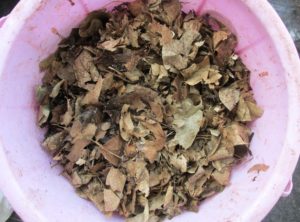
Now that we have justification for adopting organic farming for mitigating climate change, the next natural question is how do we move forward. And this happens to be the most difficult question to answer. There are two facets to this question. First is collective action and second is individual action. Collective action will be governed more by socioeconomic conditions and national and international policies and their implementation while individual action is completely dependent on a person, family and community.
At the policy level changes need to be brought about encouraging soil carbon sequestration and climate resistant agriculture. Some examples are as follows.
- Reduce/remove subsidy from chemical fertilizer and pesticides
- Reward farmer financially for soil carbon sequestration
- Encourage farming of climate resistant crops and varieties through subsidies, insurance and consumer awareness
- Levy meat tax on industrially produced meat
- Handhold farmer during conversion from conventional to organic farming through insurance and free training
- Increase awareness about organic food among consumers
And here are some suggestion, to be practiced at an individual level in the context of organic farming for mitigating climate change.
- Support your local farmer and create incentives for him to grow organic food
- Include more millet and local varieties of crops in your diet
- Reduce meat and diary consumption
- Get your food waste down to zero
- Compost your home’s organic waste and put it back into soil. Use dry leaves from your nearby park in the composting process (They are usually incinerated by municipality)
- Start your own kitchen garden using locally available inputs and waste materials
- Generate awareness in your community
End Note
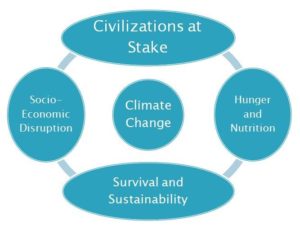
Climate change is not just an environmental issue. At present it is causing hunger and nutrition issues and social disruptions, but will soon turn into a survival and sustainability issue having repercussion for the entire human civilization. Greta has surely manged to make people sit up and take notice of this crisis and hence this is a great starting point. But now its time for well directed action.
A few days earlier there was a climate strike organized here in Bhubaneswar. People marched together shouting slogans and demanding action from the municipality for properly disposing waste (esp organic waste as it emits methane when dumped in landfills). But I wonder if it could have been for something else that is beyond individual action. Every individual can segregate organic waste at home and compost it. Then the municipality really does not have to deal with all that waste. By this I don’t mean to undermine the value of the strike. What I am worried about is the purpose of the strike. There is individual action and there is organizational action and every problem is better solved in one domain than the other. Collective individual action more doable and probably has better impact in waste handling than organizational action while policy level changes and incentives has better impact in lowering industrial pollution. Individual action is as important as government’s action. What every individual practices also affects carbon emission levels in the world.
Any disruptive measure always helps in generating attention. But if such disruptions are not followed up by solid well directed action or are followed by more such disruptions then it ends up becoming theatrical and flimsy. And I hope this moment created by Greta goes up to become the exact opposite through collective and individual action with Organic Farming being at the center of all actions and demands for managing climate change.


